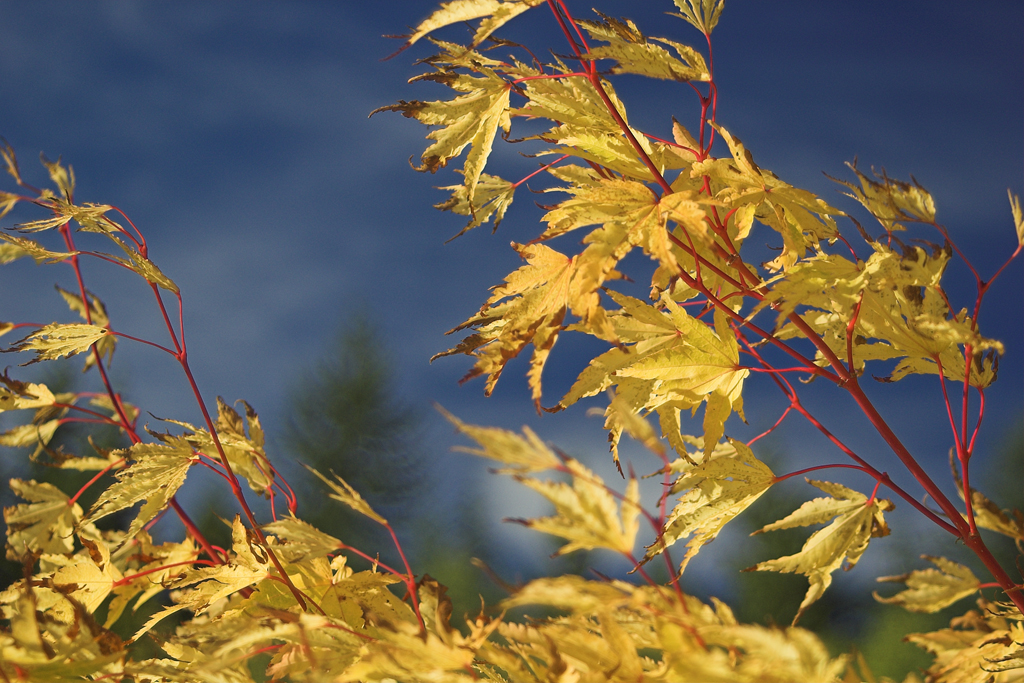Maple Tree Bark Care: Identifying and Treating Common Diseases

Maple trees are a beloved and iconic part of many landscapes, known for their beautiful foliage and delicious syrup. However, like all living things, maple trees are susceptible to various diseases and afflictions that can affect their health and appearance. As a responsible tree owner or enthusiast, it’s essential to be aware of these issues and know how to identify and treat them to keep your maple trees thriving. In this comprehensive guide, we’ll dive into the world of maple bark care, exploring common diseases, signs of distress, and effective treatment methods.
Understanding Maple Bark Anatomy

Before we delve into the specific diseases and afflictions that can affect maple bark, it’s crucial to have a basic understanding of the bark’s anatomy. Maple bark consists of several layers:
- Outer bark: This is the rough, protective layer that we see on the surface of the tree. It helps defend against external threats and environmental stresses.
- Inner bark (phloem): Beneath the outer bark lies the inner bark, which is responsible for transporting nutrients and sugars throughout the tree.
- Cambium: The cambium is a thin layer of cells between the inner bark and the sapwood. It’s responsible for producing new bark and wood cells, allowing the tree to grow.
- Sapwood: The sapwood is the younger, outermost layer of wood that transports water and minerals from the roots to the leaves.
- Heartwood: The heartwood is the older, inner layer of wood that provides structural support to the tree.
Common Maple Bark Diseases and Afflictions
1. Maple Bark Disease (Eutypella canker)
Maple bark disease, also known as Eutypella canker, is caused by the fungus Eutypella parasitica. This disease primarily affects sugar maples and can lead to significant damage if left untreated.
Symptoms:
- Sunken, discolored areas on the bark
- Callus tissue forming around the edges of the canker
- Dieback of branches and leaves
Treatment:
- Prune and dispose of infected branches
- Avoid wounding the tree, as this can provide entry points for the fungus
- Maintain proper tree health through regular watering, fertilization, and mulching
2. Sapstreak Disease
Sapstreak disease is a fungal infection caused by Ceratocystis virescens, which affects the sapwood of maple trees. This disease can be particularly devastating, as it can lead to rapid decline and death of the tree.
Symptoms:
- Dark streaks in the sapwood, visible when the bark is removed
- Wilting and yellowing of leaves
- Premature leaf drop
Treatment:
- Unfortunately, there is no effective treatment for sapstreak disease
- Infected trees should be removed and destroyed to prevent the spread of the fungus
- Avoid using infected wood for lumber or firewood, as this can spread the disease to other trees
3. Verticillium Wilt
Verticillium wilt is caused by the soil-borne fungi Verticillium albo-atrum and Verticillium dahliae. This disease affects the vascular system of maple trees, disrupting water and nutrient transport.
Symptoms:
- Wilting and yellowing of leaves, often on one side of the tree or branch
- Premature leaf drop
- Discoloration of the sapwood, visible as streaks when the bark is removed
Treatment:
- There is no cure for verticillium wilt, but proper care can help manage the disease
- Prune and dispose of infected branches
- Provide adequate water and nutrients to support the tree’s health
- Avoid planting susceptible species in areas with a history of verticillium wilt
4. Frost Cracks
Frost cracks are vertical cracks that form in the bark of maple trees due to rapid temperature changes. These cracks can weaken the tree and provide entry points for pests and diseases.
Symptoms:
- Vertical cracks in the bark, often on the south or southwest side of the tree
- Cracks may close and reopen with temperature fluctuations
Treatment:
- While frost cracks cannot be repaired, proper tree care can help prevent them
- Wrap young or thin-barked trees in the fall to insulate against temperature fluctuations
- Avoid pruning in late summer or early fall, as this can stimulate new growth that is more susceptible to damage
Preventing Maple Bark Issues
While it’s important to know how to identify and treat maple bark diseases and afflictions, prevention is always the best approach. Here are some tips to keep your maple trees healthy and resilient:
- Proper planting: When planting new maple trees, choose a suitable location with well-draining soil and adequate space for growth. Avoid planting too deeply, as this can lead to bark decay.
- Regular watering: Maple trees require consistent moisture, especially during dry spells. Water deeply and regularly, focusing on the root zone.
- Mulching: Apply a layer of organic mulch around the base of the tree, keeping it a few inches away from the trunk. This helps retain moisture, regulate soil temperature, and suppress weeds.
- Fertilization: Provide your maple trees with a balanced, slow-release fertilizer in the spring to support healthy growth and resistance to disease.
- Pruning: Regular pruning helps maintain the tree’s structure, remove dead or damaged branches, and improve air circulation. Always use clean, sharp tools and avoid pruning during wet weather to reduce the risk of disease transmission.
- Pest control: Monitor your maple trees for signs of pest activity, such as holes in the bark, frass (insect droppings), or abnormal leaf damage. If pests are detected, consult with a tree care professional to determine the best course of action.
Conclusion
Caring for maple bark is an essential aspect of maintaining the health and beauty of these beloved trees. By understanding the anatomy of maple bark, recognizing common diseases and afflictions, and implementing proper prevention and treatment methods, you can ensure that your maple trees thrive for years to come. Remember, early detection and prompt action are key to successfully managing any issues that may arise. With dedication and a watchful eye, you can enjoy the stunning foliage and sweet rewards that healthy maple trees have to offer.





